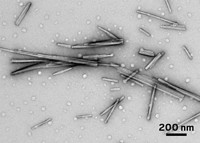Advertisement
Grab your lab coat. Let's get started
Welcome!
Welcome!
Create an account below to get 6 C&EN articles per month, receive newsletters and more - all free.
It seems this is your first time logging in online. Please enter the following information to continue.
As an ACS member you automatically get access to this site. All we need is few more details to create your reading experience.
Not you? Sign in with a different account.
Not you? Sign in with a different account.
ERROR 1
ERROR 1
ERROR 2
ERROR 2
ERROR 2
ERROR 2
ERROR 2
Password and Confirm password must match.
If you have an ACS member number, please enter it here so we can link this account to your membership. (optional)
ERROR 2
ACS values your privacy. By submitting your information, you are gaining access to C&EN and subscribing to our weekly newsletter. We use the information you provide to make your reading experience better, and we will never sell your data to third party members.
Neuroscience
A mystery molecule may help diagnose chronic traumatic encephalopathy
The hydrophobic molecule, found in tau filaments, may lead to a living diagnostic
by Megha Satyanarayana
March 23, 2019
| A version of this story appeared in
Volume 97, Issue 12

Researchers have discovered an unusual folding pattern around an unknown hydrophobic molecule in the tau protein in the brains of a football player and two boxers who had chronic traumatic encephalopathy (CTE). The team, led by Michel Goedert and Sjors H. W. Scheres of the MRC Laboratory of Molecular Biology, used different types of cryo-electron microscopy to determine that the protein folds and aggregates in distinct helical patterns, different from what is found in other neurodegenerative diseases, around a hydrophobic moiety (Nature 2019, DOI: 10.1038/s41586-019-1026-5). Based on the location of the tau tangles, the researchers think the hydrophobic molecule may leak out of the blood during the repeat head trauma and inflammation that causes CTE. However, they don’t know what it is. Scheres suspects it may be a steroid or a fatty acid. The race is now on to identify the hydrophobic molecule and to find compounds that might displace it or destabilize tau folding or aggregation. Scheres also thinks the folding pattern will be detectable using imaging methods. Today, CTE can be conclusively diagnosed and studied only after someone has died.
CORRECTION:
This story was updated on March 28, 2019, to state that the technique used to study the protein aggregates was cryo-electron microscopy.





Join the conversation
Contact the reporter
Submit a Letter to the Editor for publication
Engage with us on Twitter